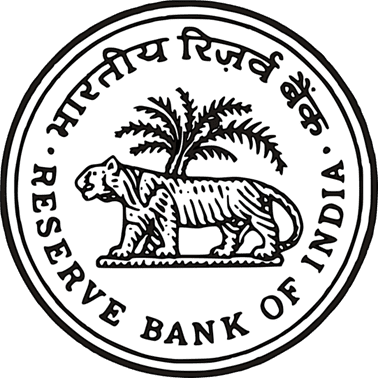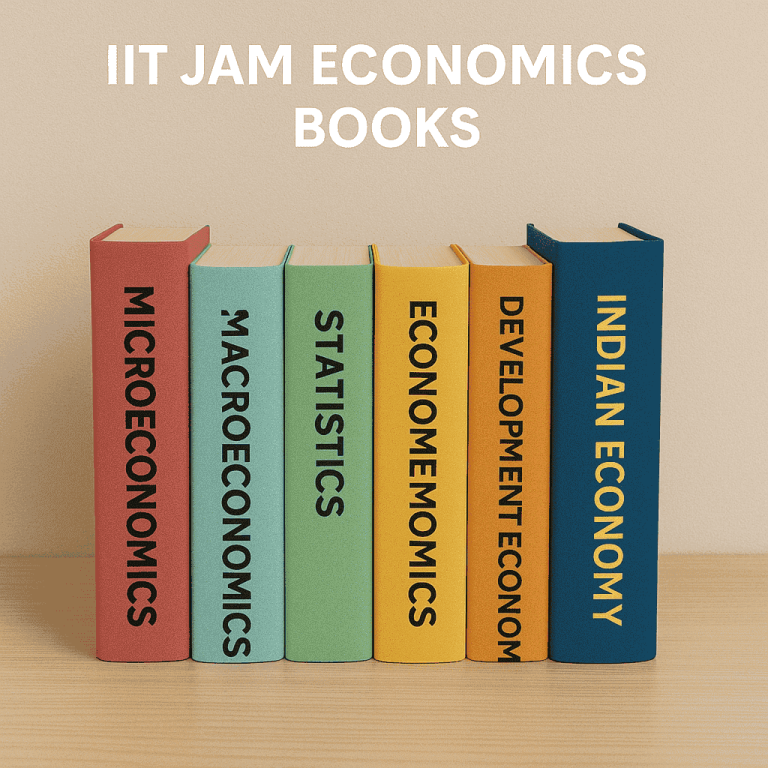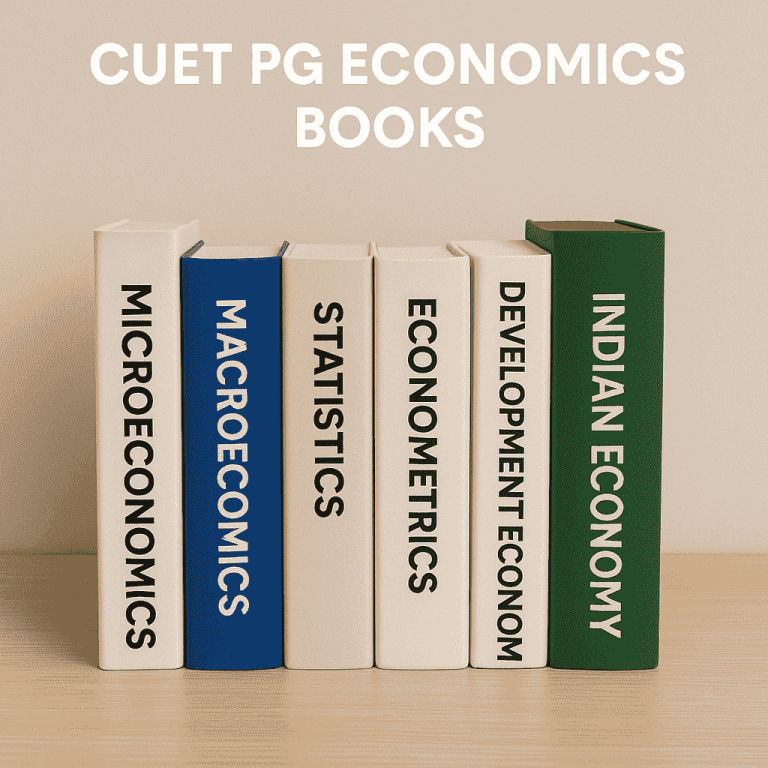The CUET PG Economics Syllabus 2026 is a critical resource for students aspiring to pursue an MA in Economics degree at top universities like Delhi School of Economics (DSE), Jawaharlal Nehru University (JNU), Indira Gandhi Institute of Development Research (IGIDR), Madras School of Economics (MSE), etc. The CUET PG Economics Syllabus for MA Economics entrance is designed to assess candidates’ proficiency in core economic concepts, making it essential for aspirants to master topics like Microeconomics, Macroeconomics, Mathematical Economics, Statistics, Econometrics, and Indian Economy.
This comprehensive guide explains in details : What is CUET PG Economics Exam, CUET PG Economics Syllabus, syllabus, and best books for covering CUET PG Economics syllabus.
What is CUET PG Economics Exam?
The CUET PG Economics Exam (Code: COQP10) is a computer-based test (CBT) undertaken for admission to the MA Economics / M.Sc programme in India. Conducted annually by National Testing Agency (NTA), the CUET PG Economics exam has gained prominence because many Universities have decided to select candidates for admission in MA Economics programme based on result of the CUET PG Economics exam. The Universities which have chosen to stay out of CUET Exam and conduct their own exams are Indian Statistical Institute (for admission in MSQE programme), Indian Institute of Technology (IIT JAM Economics Exam, Jamila Milia Islamia, IIFT, etc.
CUET PG Economics Syllabus
The CUET PG Economics exam syllabus consists of five core areas: Microeconomics, Macroeconomics, Quantitative Methods in Economics and Indian Economy. In particular, the CUET PG Economics syllabus is divided under Microeconomics, Macroeconomics, Money & Inflation, Consumption & Investment Function, Statistical Methods in Economics, Mathematical Methods in Economics and Indian Economy
MA Economics : CUET PG Economics Syllabus
Preparing the CUET PG Economics Syllabus thoroughly is the first step towards taking admission in finest colleges like the Delhi School of Economics (DSE), Jawaharlal Nehru University (JNU), Indira Gandhi Institute of Development Research (IGIDR), Madras School of Economics (MSE), etc.
Microeconomics
- Consumer Theory or Behaviour: Demand, Utility, Indifference Curve, Revealed Preference Theory, Consumer Surplus
- Production Theory: Production Function, Law of Variable Proportions, Returns to Scale, Cost Function, types and concepts
- Price and Output determination in Market: Perfect and Imperfect Competition (Monopoly, Price Discrimination, Monopolistic, Duopoly and Oligopoly models)
- General Equilibrium, Efficiency and Welfare: Equilibrium and efficiency under pure exchange and production; overall efficiency and welfare economics, externality
Macroeconomics
- National Income Accounting
- Income and Output Determination: Aggregate Demand and Aggregate Supply, Effective Demand Principle, Classical and Keynesian Theory
Money and Inflation
- Demand and Supply of Money, Money Multiplier and High-Powered Money, Credit Creation, Role of Reserve Bank of India and Commercial Banks, Quantitative Theories of Money , Philip’s Curve
- Monetary and Fiscal Policy of India and its role
Consumption and Investment Function
- Permanent, Relative and Life Cycle Hypothesis, determinants of business fixed investment; residential investment and inventory investment, Multiplier and Accelerator
- Open Economy Models: Mundell and Fleming Model (IS, LM and BP curve) , Balance of Payments, exchange rate determination, Purchasing Power Parity
- Economic Growth: Harrod-Domra Model, Solow Model
Statistical Methods in Economics
- Mean, Mode, Median, Dispersion, Skewness, Quartile Deviation, Average Deviation, Standard Deviation
- Correlation
- Simple Regression Model Probability Distribution Sampling
Mathematical Methods in Economics
- Sets and Vector
- Functions of one and several real variables
- Single and Multi-variable optimization
- Integration of functions
- Difference equations
- Determinants Matrix
- Linear Programming Probability
- Differential Equations
Indian Economy : Overview of colonial economy
- Macro Trends: National Income; population; occupational structure
- Agriculture: Agrarian structure and land relations; agricultural markets and institutions – credit, commerce and technology; trends in performance and productivity; famines. Railways and Industry: Railways; the de-industrialization debate; evolution of entrepreneurial and industrial structure; nature of industrialization in the interwar period; constraints to industrial breakthrough; labor relations
- Economy and State in the Imperial Context
- The imperial priorities and the Indian economy; drain of wealth; international trade, capital
- Flows and the colonial economy – changes and continuities; government and fiscal policy
- New Economic Policy
- Public Economics: Public and Private Goods, Externalities, Budget, Deficits, Public Debt, Fiscal Federalism in India
- Taxation: its economic effects; dead weight loss and distortion, efficiency and equity considerations, tax incidence, optimal taxation
- International Trade Theories: Adam Smith, Ricardo, Heckscher-Ohlin model and New Trade Theories
Best Books to Prepare CUET PG Economics Syllabus
Cracking the CUET PG Economics exam requires the right study materials that align perfectly with the official CUET PG Economics syllabus (COQP10). With competition growing fiercer each year for admission into top MA Economics programme, here’s the list of expert-crafted books for covering all topics under CUET PG Economics syllabus.
Booklist for Microeconomics for CUET PG Economics Syllabus
The recommended booklist for preparing ‘Microeconomics’ under CUET PG Economics syllabus includes
- Hal Varian (2010): Intermediate Microeconomics: A Modern Approach, 8th edition, Affiliated East West Press (India)
- Snyder and W.Nicholson (2010): Fundamentals of Microeconomics, Cengage Learning (India)
- H.L. Ahuja, Advanced Economic Theory: Microeconomic Analysis, latest
edition, S.Chand & Company, New Delhi - Koutsoyiannis (2003), Modern Microeconomics, Second Edition
- B. Douglas Bernheim and M.Whinston (2009): Microeconomics, Tata McGraw Hill (India)
Booklist for Macroeconomics for CUET PG Economics
- Rudiger Dornbusch, Stanley Fischer and Richard Startz (2018), Macroeconomics, 12th Edition, McGraw Hill
- Richard Froyen (2013), Macroeconomics: Theories & Policies, 10th edition,
Pearson Education (India) - Mankiw, N. (2016). Macroeconomics, 9th edition
- O. Blanchard (2006), Macroeconomics,4th edition, Pearson Education (Asia)
Booklist for International Economics for CUET PG Economics Syllabus
D. Salvatore (2014), International Economics, 11th edition, Wiley (Asia)
Booklist for Growth and Development for CUET PG Economics Syllabus
- Debraj Ray, Development Economics, (DE), Princeton University Press, 1998
- A.P. Thirlwall (2011), Economics of Development, 9th Edition, Palgrave Macmillan
- M.L. Jhingan (2016), Economics of Development and Planning, 41st Edition, Vrinda Publications, Delhi
Booklist for Statistical Methods in Economics for CUET PG Economics
- Jay L. Devore (2010), Probability and Statistics for Engineers, Cengage Learning
Allen L Webster (2010), Applied Statistics for Business and Economics: An Essential Version, 3rd Edition
P.H.Karmel, M.Polasek (2012), Applied Statistics for Economists, 4th Edition
Miller and Miller (2013), John E. Freunds’s Mathematical Statistics, 8th Edition
- For Practising Questions: S.C. Gupta, Fundamentals of Statistics, latest edition
Booklist for Mathematical Methods in Economics for CUET PG Economics
- K. Sydsaeter and P. Hammond: Mathematics for Economic Analysis, Pearson Educational Asia: Delhi (2002)
Alpha C. Chiang and Kevin Wainwright (2017), Fundamental Methods of Mathematical Economics, 4th Edition, McGraw Hill Education
Booklist for Econometrics for CUET PG Economics
- D. N. Gujarati, D.C. Porter and Manoranjan Pal, Basic Econometrics, 6th edition, McGraw Hill, 2021 Indian edition.
- Jeffrey M. Wooldridge, Introduction to Econometrics: A Modern Approach, 5th Edition, Cengage Learning, 2014.





